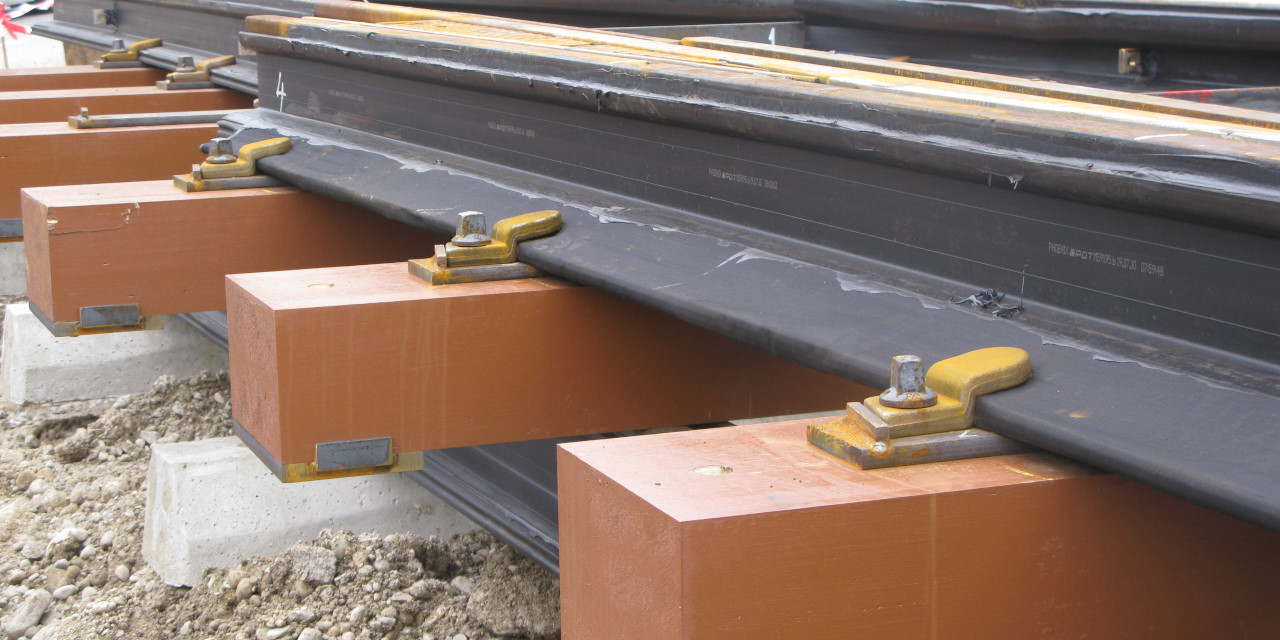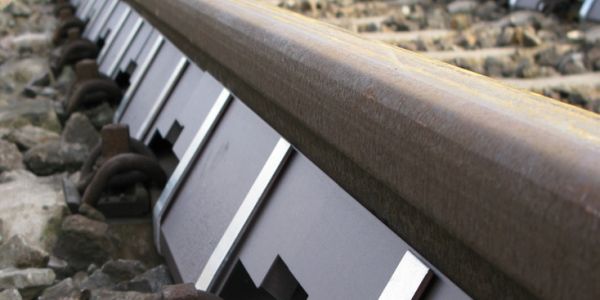FFU® synthetic railway sleepers
Railroad sleepers made of FFU have been installed worldwide since 1980 and have therefore been in reliable use for over 40 years.
Switch systems and railway bridges are the preferred areas of application. But also the use as flat sleepers and track sleepers and for special constructions offers great possibilities to optimize the railway superstructure.
Areas of application
You can find detailed information about your needs here.
Bridges
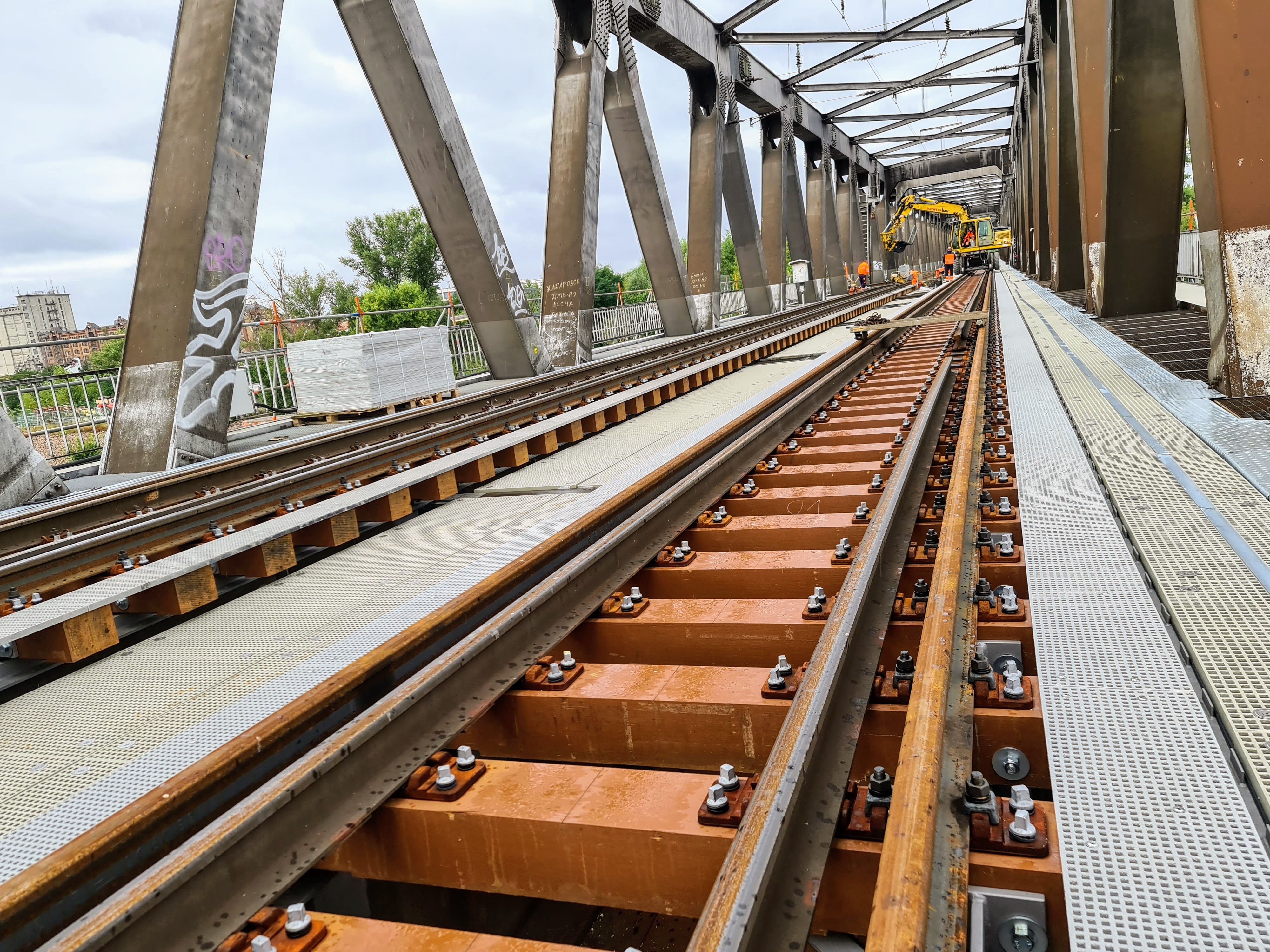
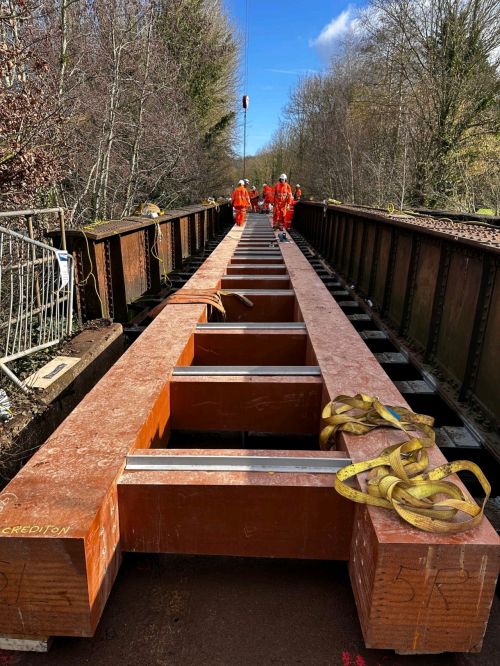
Railroad bridges
FFU Synthetic Wood can be used on railroad bridges in the same way as classic bridge wood made of natural wood. However, with the technical, economical and sustainable advantages of FFU synthetic wood.
The installation of FFU Synthetic Wood on railroad bridges creates a high additional benefit for the engineering art in bridge construction as well as long-term and sustainable for the environment.
Since the 1980s, FFU synthetic wood sleepers have been used on bridges and are now seen as standard bridge beams.
To date, FFU artificial wood sleepers are used on bridges in many countries worldwide, including Japan, Australia, Belgium, Germany, Great Britain, the Netherlands, Austria, Switzerland, Serbia, Norway, the USA, Sweden, Hungary and many others.
Due to the long service life of FFU synthetic wood sleepers of over 50 years, synthetic wood sleepers offer great advantages in terms of maintenance and of all costs. Blocking times as with the use of wood due to maintenance and replacement are reduced to a minimum and offer the railroad operators a trouble-free and smooth operation.
The sustainability due to the long lifetime and the possibility to recycle the sleepers and give them a second life allows a future-oriented use. Furthermore, FFU has no detectable chemical impact on water, soil and ground. This was already proven in the 1980s by the Food Research Institute in Japan.
Large dimensions and special solutions for bridges
Long timbers in the area of railway bridges are used in particular in the English-speaking world. Here, too, FFU synthetic wood offers a durable and sustainable solution. Today we deliver long beams in dimensions up to 60 cm wide, 800 cm long and up to 60 cm height.
The manufacturing of these large long beams with millimetre precision, the workability analogous to wood and the use of conventional fastening systems, combined with the very long service life of over 50 years, are the main reasons for the standard use on railway bridges.
Switches
FFU synthetic wood sleepers have been used as turnout sleepers for over 40 years. The long service life in combination with the excellent technical properties describes the special advantages of FFU synthetic wood sleepers.
The chemical resistance as well as the dimensional stability with a very low coefficient of expansion ensure a permanently constant track and thus minimize the maintenance effort.
FFU synthetic wood sleepers are used in particular in turnout systems in ballast beds, on steel bridges and in slab tracks. In addition to the usual 16 cm high sleepers, 14 cm high sleepers are also available in order to optimize the gradient with a suitable ballast height.
Especially in the highly loaded frog area, this technology provides safety, availability and minimizes maintenance.
Assembly of the turnouts in the factory
In switch construction, it is also important to consider the dimensional stability of FFU synthetic wood and the resulting positional stability during assembly of the switches in the factory. A fast and safe, partly fully automatic, in-factory turnout assembly means a very short capacity utilization for the plant.
Turnout systems with FFU synthetic wood offer a lower weight compared to concrete but also wooden turnouts and thus advantages in transport and installation logistics.
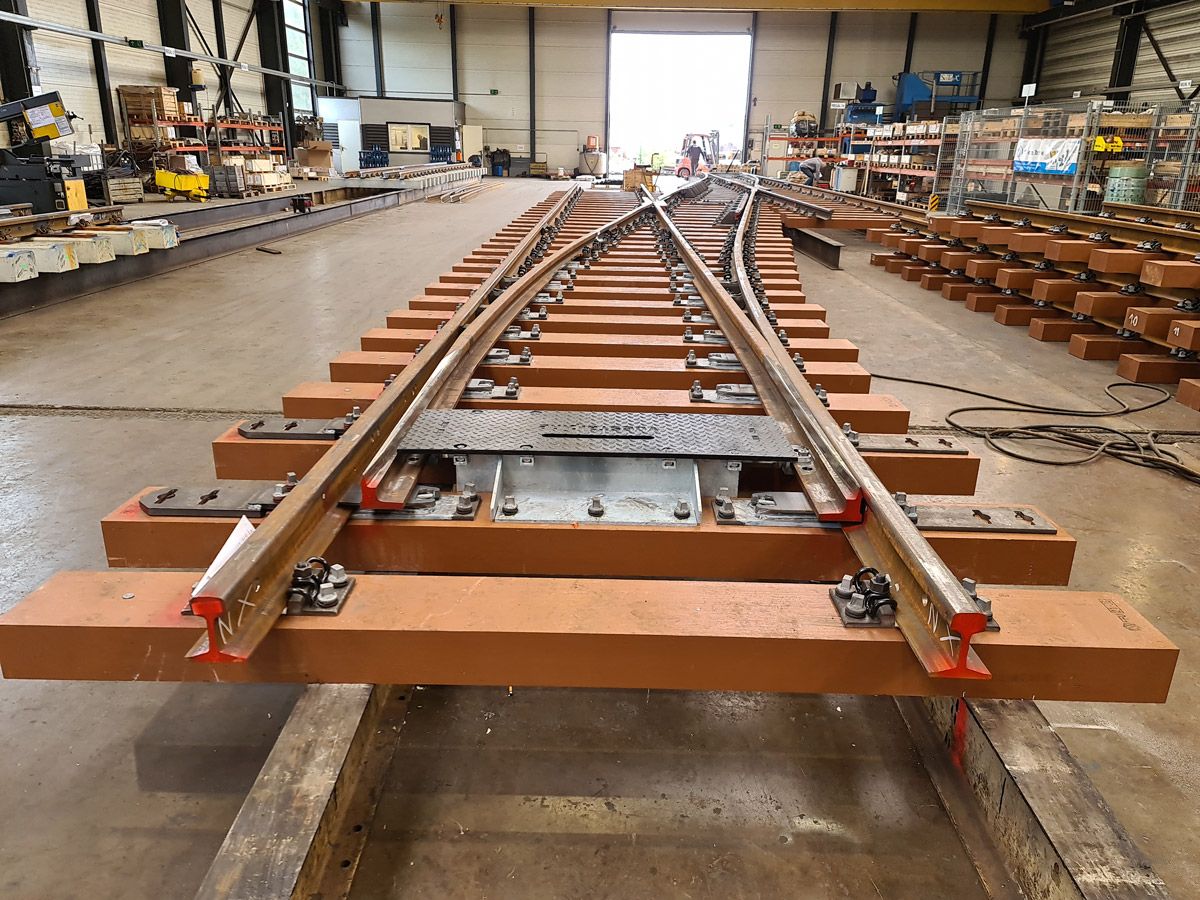
Flatsleepers
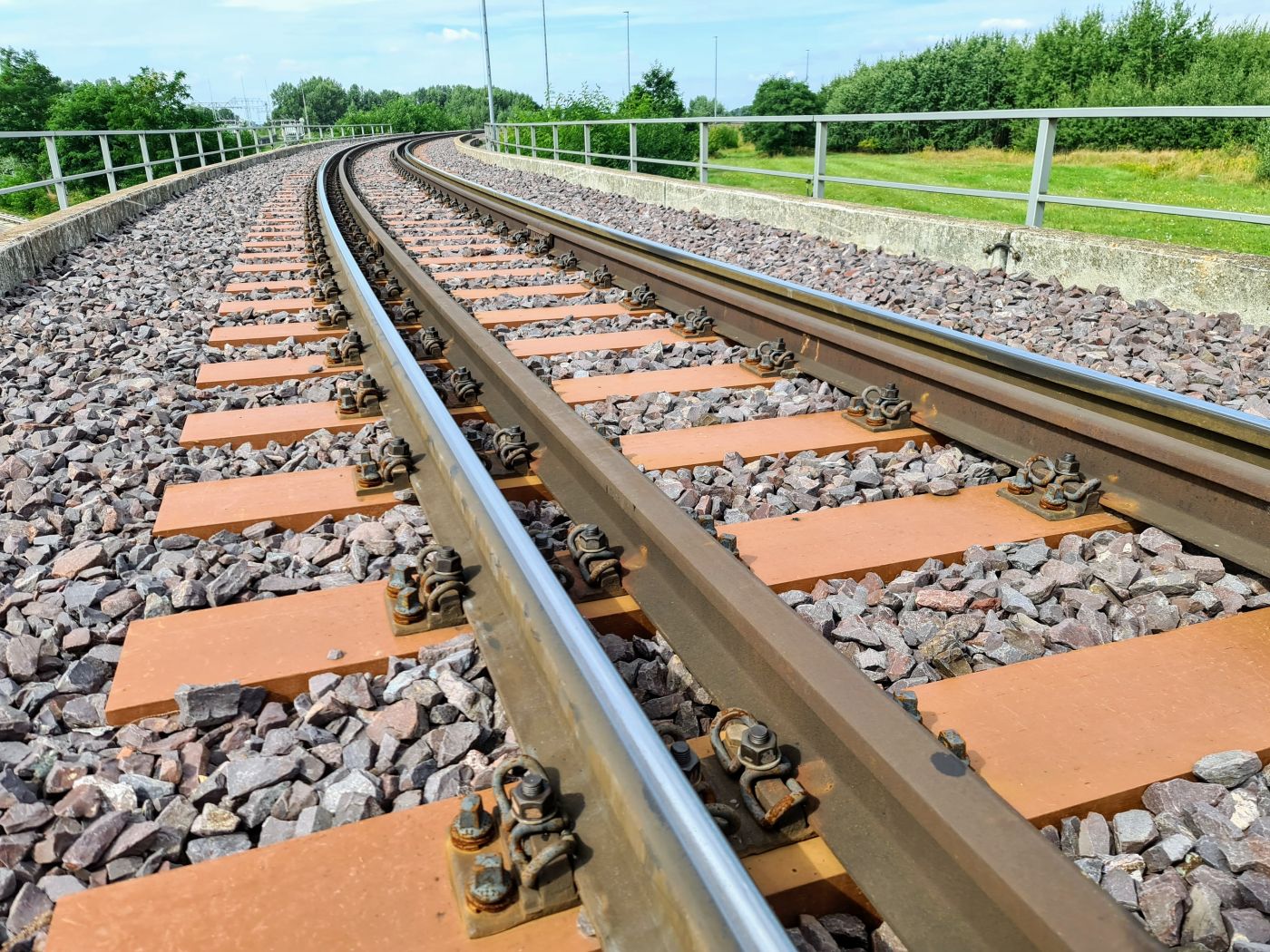
Flat sleepers
As early as 2014, the Federal Railway Authority in Germany and the Federal Office of Transport in Switzerland granted approval for the use of flat sleepers on the German and Swiss railroad networks, respectively.
Due to existing constraints, as well as in areas with low ballast underlay or for the realization of the clearance profile, flat sleepers are mainly used today.
Even on highly loaded lines with up to 100,000 load tons per day, the FFU flat sleeper has proven its worth for many years.
In accordance with the approval of the Federal Railway Authority (EBA) in Germany, FFU® synthetic wood sleepers can be installed with an overall height of 10 cm, this at an axle load of 22.5 tons and further speed limits of 100 km/h.
In this way, clearance profiles in tunnels can also be realized by using e.g. 12 cm flat sleepers.
Specials
In addition to "classic" sleepers for bridges, switches or the track, FFU offers special constructions due to its superior technical properties and the machinability comparable to wood.
For example, for the Newark Crossing in England, a complex crossing structure was designed to provide a durable solution in the highly loaded area. The respective long beams are approx. 18 m long. The former solution was not durable and in view of a permanent and sustainable solution the operator decided to use FFU.
Level crossings
on branch lines were usually made of wood in the past. The rapid weathering of wood, the very high stress caused by equipment and vehicles used in agriculture and forestry, while at the same time maintaining the required safety for crossing pedestrians, means that wooden structures have to be replaced or exchanged within a very short time.
In contrast to wood, FFU Synthetic Wood is based on an almost non-porous material, does not absorb moisture, does not require any environmentally harmful chemicals (nature and water protection) and proves to be extremely weather-resistant.
Under these aspects, the safety of the level crossing is increased and offers the certainty of a much longer functionality.
Within just one hour, the old crossing can be removed and the new one with FFU synthetic wood installed. Immediately afterwards, traffic can resume and the level crossing can be opened to traffic.
In addition to the high life expectancy, FFU synthetic wood can be recycled, which means that we are able to manufacture new products for the railroad sector but also for other areas of the construction industry. FFU synthetic wood is the sustainable solution for a modern railroad infrastructure.
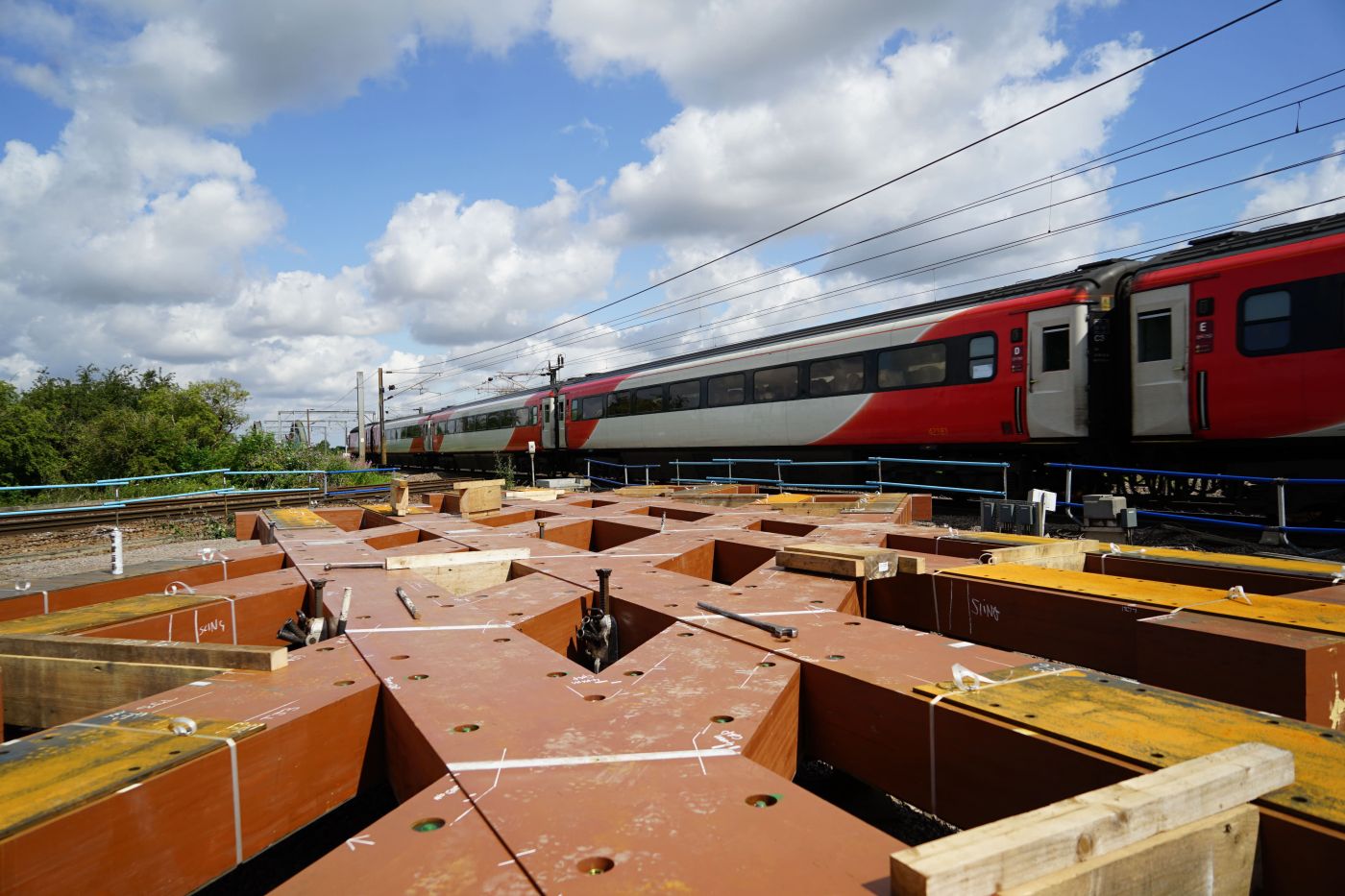
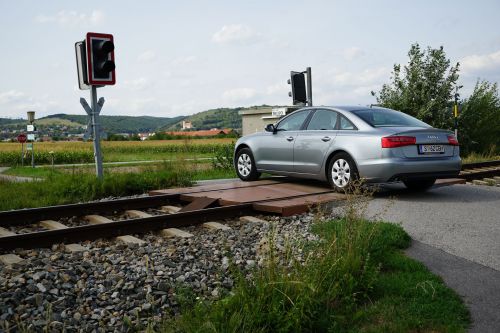
Experience the details of FFU
- How is FFU produced?
- Machining in the factory.
- Adjustment on site?
- How to fix FFU?
- Quality control and approvals.
- Resitance and environment?
- FFU benefits compact?
Combining the components
Continuous fibreglass rovings with optimised surface are pulled into the die. A special polyurethane composition is injected into the die. This saturates the very dense fibreglass rovings completely without leaving pores. Then the correct amount of heat is supplied in a controlled manner and thus the highest quality is ensured with the pulling speed being monitored.

FFU synthetic wood sleepers can be manufactured and supplied ex works to the most precise customer requirements.
This allows a considerable reduction in
- Adjustments on site
- The time needed to install FFU railway sleepers
- The duration of the track possession
- The cost of site logistics
- The cost of project preparation

Prefabrication in the factory
- False edges for superelevations
- Bore holes for sleeper fastening
- Milled groove for longitudinal bearer supports
- Sanding of the surface
- False edges for transverse displacement
- Special shape of FFU railway sleeper
- Large cross-sections and lengths
Clear marking of FFU® railway sleeper
The FFU synthetic sleepers prefabricated by customer order are already clearly marked in the factory in accordance with the laying plan. This allows installation at the predetermined position to proceed quickly and safely.

Gradient adjustment ex works
If the gradient of an existing bridge structure needs to be recreated, the individual FFU bridge sleepers can be manufactured to the millimetre and to the respective different heights.
Hence, the FFU bridge sleeper is prepared for a perfect gradient.
FFU synthetic wood railway sleepers can be machined or worked on the project in the same way as sleepers of natural wood. Making bore holes, sawing, milling and chiselling FFU synthetic wood is possible with the use of standard tools.
Practical experience
Being non-porous as well as highly dimensionally stable ensure a long-lasting functionality of FFU synthetic wood and its screw connections.
In order to utilise these essential technical benefits compared to natural wood it is important that the specifications of the manufacturer are adhered to when making bore holes.
Advantages of FFU compared to natural wood are continuous glass fibre strands and closed pores.
The operating life of the tools used can be easily optimised by using WIDIA tools or boring tools for steel materials.
At any rate, the prevalent working regulations must be adhered to.
Worksite logistics
The specific weight of FFU 74 synthetic wood is approximately 740 kg/m3, thus offering the same advantages as natural wood for transportation to the worksite.
Dimensional stability together with milled grooves and false edges already generated at the factory allow on-site work to be performed speedily, accurately and safely.
The work effort and periods of track possession can be optimised so that the track is available again quickly for train operation.
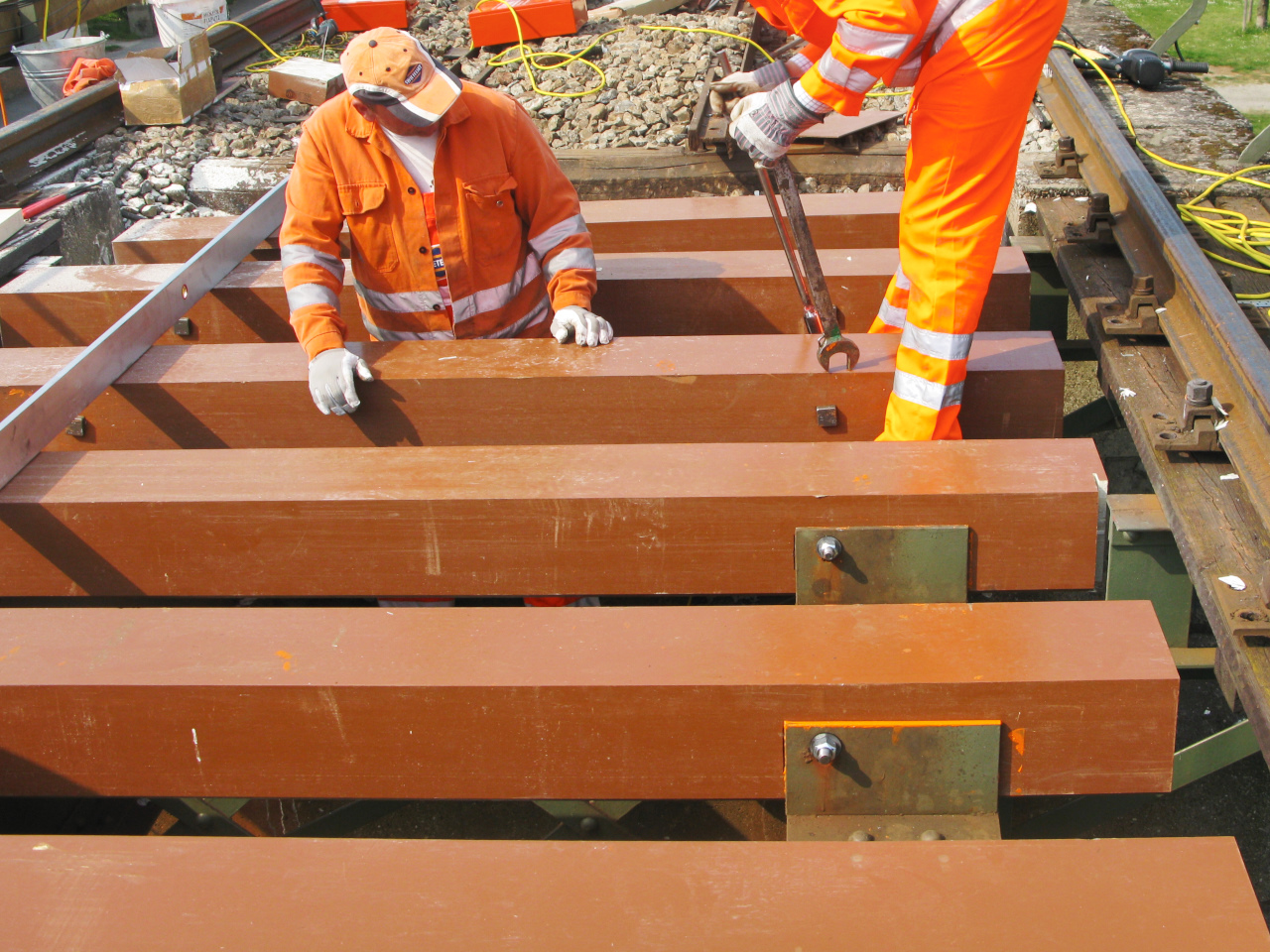
We offer various repair methods, for example, if something went wrong during installation.
Repair method using FFU™ 2C Quickfiller
For the filling and repairing of boreholes in FFU railway sleepers only
The Sekisui FFU-Quickfiller system is a 2-component reaction resin system. The Sekisui FFU-Quickfiller repair system is used to repair incorrectly drilled holes for the insertion of sleeper screws in Sekisui FFU synthetic wood sleepers. Once the temperature-dependent curing time has elapsed, the repair system is fully operational and the sleeper screw can be inserted.
Old and new boreholes in the same place or overlapping.
If the repair is to be carried out solely using FFU-Quickfiller in accordance with the work steps shown below, the drill hole repaired in this way can be processed like regular FFU synthetic wood following a curing time of down to 15 minutes.

Repair method using synthetic wood dowel and synthetic resin
Old and new boreholes are not in the same place/not overlapping
If the repair is carried out using an FFU synthetic wood dowel plus synthetic resin in accordance with the work steps shown below, the borehole being repaired can be processed like regular FFU synthetic wood following a minimum curing time of 4 hours.

High consistency of material behaviour
The continuous fibreglass rovings in FFU provide the customer with a far greater consistency of the material behaviour in practical use when compared to natural wood.
Better technical characteristics than those of natural wood make the technical and economic optimisation of the cross-section possible. This applies in particular to bridges and switches.
Since the 1980s, Japanese trains travel over 14 cm high FFU sleepers at switches.
In 2015, Munich Technical University proved that this works safely in Europe, too, on ballast with a 22.5 t axle load and at speeds up to 230 km/h.
In the ballast bed the underside of the FFU synthetic wood sleeper behaves just like a wooden sleeper.

Very high resistance to chemicals
Since FFU has a closed cell structure, it does not absorb any moisture.
It also exhibits very high chemical resistance to oils, lubricants and contaminants from rail operations.
FFU retains is full function even on contact with artificial fertilisers, road salt and many other chemical substances.

Compatibility with water and soil
On 14 November 1994, the Japan Food Research Laboratories completed report OS57110607-1. It reported on the water quality test with FFU synthetic wood, based on regulation No. 69 of the Japanese Health Department. Its conclusion was that the immersion water as well as the control water met the water quality standards.

UV resistance & material protection
UV light does not have any effect on the technical characteristics of FFU synthetic wood. Where FFU is not painted, long-term UV irradiation only leads to a discolouration of the surface.
It is not necessary to use environmentally harmful impregnations for this very long lived material.

Decide for yourself which advantages are most relevant.
Economic efficiency
- Product life forecasted with more than 50 years
- Minimum lifecycle costs
- Minimum maintenance costs
- Maximum track system availability
- Short possessions for installing FFU railway sleepers
- Reduction in maintenance costs and effort in the rail infrastructure
- LCC analysis by the Technical University of Graz/Austria shows that their use is economic for open steel bridges with a bridge life expectancy of 15 years or more
- LCC analysis by the University for Technology and Architecture in Freiburg/Switzerland indicates for switches
- economic benefits of 8 to 12% when wood is replaced with FFU
- economic benefits of 7 to 14% compared to a replacement of wood with concrete sleepers where the substructure must also be refurbished
Safety
- Proven track record with more than 1,400 km of track fitted
- In daily use for over 35 years
- Gauge reliability in case of derailment
- Increased safety of the railway system overall
- Continuously excellent material technical properties
- Quality controlled material
Environment
- Free from insecticides
- No water absorption
- Very high chemical resistance
- Very high resistance to weathering
- No chemical effect on soil and water
- Recyclable and reusable
Project
- Customised, dimensionally stable production to the millimetre ex works
- Machinability during project the same as that of natural wood
- Specific weight is the same as for natural wood
- Use of standard tools
- Use of existing rail fastening devices
- No change in the unladen weight of a bridge
- Constant static load bearing system of a railway bridge
- Visual appearance of the bridge remains intact
- Very high elastic load bearing ability – switch frog
- Good interlocking with ballast
- Very good electrical insulation
FFU in detail – Download the working guidlines
Stay up to date and check out our current brochures, reference projects and processing guidelines.





